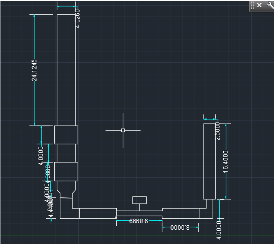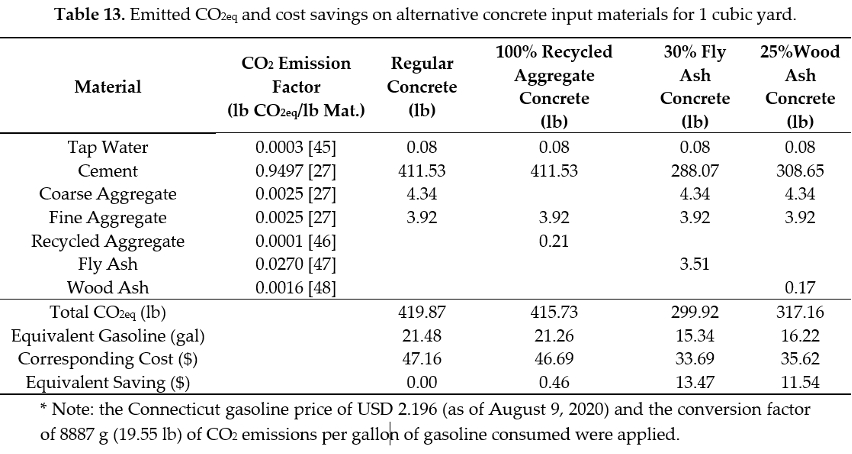Civil Engineering Materials Research
-
Recycled Materials in Pervious Concrete

Advisor:
Goli Nossoni, Associate Professor of Civil Engineering
Byungik Chang, Professor of Civil EngineeringGraduate Student:
Divaker Reddy AllalaSponsor:
Provost AssistantshipProject Description:
Pervious concrete is concrete, which has a void in between aggregates due to less presence of fine aggregate. Tests performed are permeability, compressive strength, hardened density and current density, porosity, and infiltration rate. Permeability test showed based on falling head method concerning ASTM standardized equipment. The goal is to determine the optimum replacement of wood ash by using recycled aggregates without compromising the compressive strength and water permeability. -
Evaluation of Alternative Concrete Strength and Economic Analysis

Advisor:
Byungik Chang, Professor of Civil EngineeringGraduate Student:
Muhammad Rauf Shaker, Mayurkumar Bhalala, and Qayoum KargarSponsor:
Research Project – CIVL6690Project Description:
Ready-mix concrete is not always affordable because it is less economical for small projects. This study shows an effort to introduce alternative home-produced concrete for small paving areas such as sidewalks, backyards, or fixing the existing concrete and discusses the economic evaluation of the alternative concrete for home purpose. The materials being used in this study are available locally or are easily purchased. The primary objective of the study is to analyze the compressive strength and conduct economic analysis of alternative home-produced concrete with different mix designs. Wood ash, fly ash, and recycled aggregate concretes are the alternative concrete types discussed in this study.Status:
CompletedDissemination:
https://doi.org/10.3390/su12176746 -
Moonglomerete for Construction on the Moon
Advisor:
Goli Nossoni, Associate Professor of Civil EngineeringUndergraduate Student:
Victor HuismanSponsor:
NASA CT Space GrantProject Description:
In the past years, most researches in NASA and elsewhere focused on making a type of geopolymer concrete for moon construction with a different binder than cement paste due to the lack of water and cement on the moon. The goal was that the new concrete should be placed using the new technology of 3D printing. However, researchers are still trying to discover a feasible binder. Even a small amount of binder transported from earth may costs millions of dollars. Since the focus was on finding this binder, researchers tried to implement the proposed solution of 3D printing some sort of non-hydraulic Portland cement concrete rather than addressing the basic problem statement. The problem statement is “construction materials on the moon with integrous material with minimum transportation from earth.” The proposed research plans to construct bricks from moon materials and energy generated on the moon with no need of any materials from earth. Instead of being 3D printed, the bricks will be made using a robotic manufacturing process. The new material uses for manufacturing bricks is called Moonglomerete, which solely uses rocks already present on the moon. Although the proposed material is very different than concrete, it still can be classified a sort of “mooncrete” where larger lighter colored moon rocks (anorthosite) will be embedded in a binder made from smaller darker rocks (basalt) that are molten to form bricks. The structure of these bricks are compatible with conglomerate rocks on earth. Basalt has a lower melting point than anorthosite. The energy required to melt dust particles of basalt will be supplied using relatively small Fresnel lenses. The temperature at the focal points of the lenses can reach more then 2000°C on the earth, which can melt most rocks in less than a minute.Status:
Ongoing -
Green Concrete Facade for CO2 Sequestration
Advisor:
Goli Nossoni, Associate Professor of Civil EngineeringUndergraduate Student:
Ayodeji Peter AjudahunSponsor:
NASA CT Space GrantProject Description:
The objectives of this research highlight the how to achieve the goals of this research and thereby providing a sufficient answer to the research question. They are as follows:- develop a design for the mixture of with cementitious material, recycled aggregates and water/cement ratio for an optimized porosity in concrete;
- determine pore size which is influenced by the size of coarse aggregate so as to attain a larger surface area and pore spaces for flow of gases and carbonation reaction.
- to design the geometry for the façade panels which will provide adequate surface area and depth for carbonation and;
- to determine the life expectancy of the panels which is dependent of the absorption capacity and structural integrity of façade panels with time.
A design of a non-structural concrete façade panel will be developed with an optimized mix design and geometry for the maximum sequestration of CO2. The mix design will include adequate proportioning of the aggregate sizes as well as the water/cement ratio. The geometry will be to provide shape and size of the panels to ensure durability and stability. This will improve the air quality and curb the negative effects of CO2 in the environment. This will ensure a better health for the people, lower building prices thereby fostering prosperity and consequentially a sustainable ecosystem. A success in this project and an adoption of this idea could prompt the US government to cut down on costs of carbon capture.
Status:
Ongoing